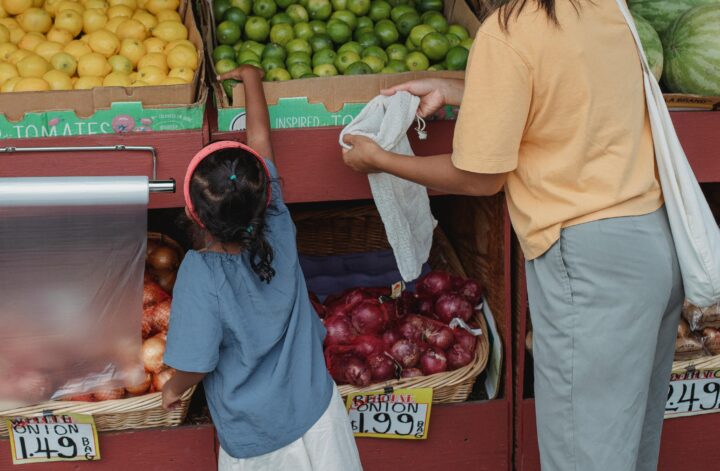In today’s hyper-connected world, our digital lives begin before we even take our first steps—sometimes before we’re even born. Ultrasound photos shared on social media, baby names posted in birth announcements, and childhood milestones broadcast for friends and family to see—all of it contributes to what’s known as a digital footprint.
By the time children are old enough to hold a tablet, many already have years of online exposure. And while the intent behind “sharenting” is often pure—sharing joy, connection, and pride—the long-term implications for privacy and identity are becoming impossible to ignore.
As guardians of the next generation, parents, educators, and caregivers must begin teaching kids about digital identity and privacy from an early age. Because in the age of permanent data, the earlier the education starts, the more empowered our children will be to shape their digital selves with intention and care.
What Is a Digital Footprint?
A digital footprint is the trail of data that a person creates while using the internet. This includes:
Photos and videos posted online
Search engine activity
Social media interactions
Apps downloaded and used
Online purchases
Comments left on forums or websites
GPS or location data collected through devices
There are two kinds:
Passive footprint: Information collected without the user actively providing it (e.g., browsing habits, IP addresses).
Active footprint: Information users willingly share online (e.g., social media posts, emails, usernames).
Now imagine how much of this is created for a child before they have any say in the matter.
The Problem with Early Exposure
The internet doesn’t forget. And that poses a few unique challenges for young people:
1. Loss of Control Over Identity
When a child’s photos or stories are posted online by adults, they have no control over how they’re portrayed. These posts can follow them into adolescence and adulthood, shaping how others view them.
2. Data Harvesting and Profiling
Advertisers and third-party data collectors may begin building profiles on children from an early age, using cookies and analytics—even on “kid-friendly” apps or platforms.
3. Cybersecurity Risks
Early digital exposure increases the risk of identity theft, online scams, and security breaches—especially when children unknowingly share personal details like addresses, school names, or birthdays.
4. Social and Emotional Impact
As kids grow, they may feel embarrassment or discomfort about past digital content that was once shared without their consent. This can affect their self-esteem and sense of autonomy.
When to Start Teaching Kids About Digital Privacy
The answer? As soon as they can understand the basics of cause and effect.
Children as young as 4 or 5 can grasp simple concepts like:
“What we post online stays online.”
“We don’t share our real names or where we live with strangers.”
“It’s okay to say no if someone wants to take your photo.”
Digital literacy should grow alongside your child, evolving with their age, maturity, and online habits.
How to Talk to Kids About Online Identity and Privacy
1. Make It a Two-Way Conversation
Ask kids questions like:
“Would you be okay if I shared this photo?”
“How do you think this comment might make someone feel?”
“What information should we keep private?”
This approach helps them develop critical thinking around digital behavior, not just follow rules.
2. Use Real-Life Analogies
Try framing digital risks in familiar terms. For example:
“Sharing your password is like giving someone the keys to your bedroom.”
“Posting something online is like putting it on a billboard—everyone can see it.”
3. Create a Family Privacy Agreement
Set shared guidelines around:
What kinds of content can be posted and by whom
Which apps or platforms are allowed
How to handle online requests from strangers
When and where device use is appropriate
4. Model Good Digital Behavior
Children learn best by example. Avoid oversharing about them online, be mindful of your own screen time, and show how you protect your own data.
Tools and Tips for Parents
Privacy settings audits: Regularly review privacy settings on apps, games, and devices.
Child-friendly browsers: Use platforms with built-in filters and ad blockers.
Digital citizenship programs: Enroll kids in age-appropriate online safety courses like Google’s Be Internet Awesome or Common Sense Media’s curriculum.
Teach the 3Ws before posting: Who will see this? What are we sharing? Why are we sharing it?
Looking Ahead: Raising Responsible Digital Citizens
The digital world isn’t going anywhere. Our job isn’t to shield kids from it—but to equip them to navigate it wisely.
As AI, facial recognition, and digital surveillance become more sophisticated, children will need more than just firewalls and screen limits. They’ll need ethics, empathy, and agency.
Teaching kids to value their digital identity and protect their privacy is as important as teaching them to cross the street or say please and thank you. It’s not just about safety—it’s about respect, autonomy, and preparing them for a future where their online self is just as real as their offline one.
Think Before You Share
Before you post another cute story or funny photo, ask yourself: Is this moment about my child—or about me?
Digital footprints begin at birth, but the responsibility of guiding them belongs to us.
Let’s raise the first generation that doesn’t have to recover from their digital past—because they were taught early on how to shape it.




